
| Specifications |
| Publisher: Aryan Books International | |
| Author Sri Sadashiva Yogishwara | |
| Language: English | |
| Pages: 171 (B & W Illus: 53, Figures: 9) | |
| Cover: Hardcover | |
| 9.8" X 7.5" | |
| Weight 680 gm | |
| Edition: 1993 | |
| ISBN: 8173050309 | |
| IDD880 |
| Delivery and Return Policies |
| Returns and Exchanges accepted within 7 days | |
| Free Delivery |
About the Author
The author having served in the curatorial capacity in the Central Asian Antiquities Museum, New Delhi, the Nalanda Museum and Archaeological Section of the Indian Museum, Calcutta, was credited with the scientific documentation of over fifty thousand antiquities comprising sculptures, bronzes, terracottas, beads, seals and sealing, wood work, paintings textiles and Pearce collection of Gems, ranging from the earliest times to the late medieval period.
Besides publishing bilingually, three publications of the Archaeological Survey of India, he has also brought out the works entitled:
He was awarded a fellowship by Indian Council of Historical Research, in 1987, for his last mentioned work.
His other works in press include:-
In addition to above, his works entitled
About the Book
The boar, a wild animal of considerable strength and speed, has been known the world over from the time immemorial, as evidenced from the ancient texts as well as archaeological sources. Initially it was a hunting animal possibly meant for human animal possibly means for human consumption, but gradually it entered the contemporary religious thought in various countries of the globe. The Indian evidence portraying reverence to the animal is comparatively later than that of the other countries of the world. As for example the animal is found depicted in the coins and legends of Greek, Crete and Rome etc centuries before the Christian era, which was followed in the later period.
In the Indian context, the animal, though occasionally appears in the Vedic and post Vedic literature, but its reverence achieved a great boost after its association with the incarnation of Visnu, a strong and powerful Brahmanical god. In this form the boar, it is stated, rescued the earth-goddess submerged under the deep sea-water. The reasons for the drowning of the Earth have been quite convincingly given in the text. The Mahabharata is quite vocal in this regard, wherein, it is stated that the earth was submerged in water because of its overpopulation
The Salient features of the episode are (i) the Deluge, (ii) the Earth, (iii) the Demon Hiranyaksa, besides the boar. With the passage of time the theme of the rescue of the earth became symbolical with the rulers of the country, who after having conquered a territory or overthrowing the foreign domination, equated the event with the rescue of the earth by the boar incarnation of Visnu. Such even were celebrated by erecting an image or a temple of the god.
The present work aims at highlighting the various aspects of Varaha from Visnu, in the background of the literary as well as the archaeological evidence, available in the country.
(The Lord first took to the form of a Fish, then of Tortoise. Thereafter, He incarnated as a Boar, Man-lion, Parasurama, Dasratha's son Rama, Krsna, the son of Vasudeva, and then the Buddha. The last one would be Kalki)
One of the prominent ideologies of the Hindu religion is the belief in the incarnation of God. This is emphatically stated in the Bhagavadgita, where Lord Krsna, has declared to Arjuna:-
This has been regarded by the scholars as the earliest reference to contain expositions of some of the tenets of the Ekantaka-school. This passage from the Bhagavadgita explains the ideology underlying the Avataravada in the Hindu thought in the clearest possible manner. It does not specify the number of Divine Incarnations, for the god 'Creates himself age after age, as the condition of the universe demands. The same idea is reflected in the Markandeya Purana, wherein, the goddess declares emphatically:-
The texts further specify three distinct types of incarnations viz: avatara, avesa and amsa; of these an avatara is taken to be a complete incarnation; a partial incarnation, more or less of a temporary nature, is known as avesa. The incarnation of a portion of the power of a divine being is characterized as amsavatra Out of the various incarnations of Visnu, Rama and Krsna are termed as avataras,
Jamadagni Parasurama appeared in the world for the specific purpose of subduing the Ksatriyss who had, at that point of time become highly arrogant. The God-appointed mission of Parasurama was only to subdue them. After the completion of his work, he disappeared from the universe after surrendering all his powers to Rama - the son of Dasaratha. The Puranas believe him to be one of the eight Chiranjivis of the country:-
After confronting Rama, Parasurama, surrendered all his divine powers to the former and retired to mountain Mahendra. Thus the divine powers were with Parasurama only for a short duration, after which he had to part with them, even though he continued to live on earth. The incarnation of Parasurama therefore comes under the category of avesa or temporary possession, because he retained the divine powers, only for short duration. The texts further state that Visnu deputed his ayudhas-Sankha and chakra to be born in the world enjoying some of his divine powers; when these emblems are born on earth they become saints and achieve the purpose of their earthly incarnation.
The most commonly accepted incarnations of Visnu are ten in number, which are declared to have been assumed by him in ten different ages with the purpose of destroying the asuras. Usually the Lord incarnated for slaying of asuras, but not so in the first two avataras in these there was no destruction of the asuras. In the first the purpose was to save the barque of Manu from deluge as Matsyavatara and in the second to serve as base for Mandarachala in Kurmavatara, wherein he assumed the form of a tortoise and functioned as a pivot for the churning rod when the milk ocean was churned by the gods and the asuras both, using the snake Vasuki as the churning rope, to obtain emrta.
About the early references to the incarnations of Visnu, it may be pointed out that the Satapatha Brahmana states that Prajapati took to the form of tortoise; similarly the Taittiriya Aranyaka mentions that the earth was raised from the waters by a black boar with a hundred hands. All the incarnations. are more or less directly referred to in later Sanskrit works, like the Ramayana, the Mahabharta and other Puranic texts.
The Matsya Purana (47.39) testifies to the Varaha being first incarnation of Visnu, who fought with the asuras :-
(There were twelve hard fought battles between the Devas and the asuras for gaining possession of their heritage, beginning from Varaha incarnation and ending with Sanda Marka).
This Purana further spells out the incarnations on the occasion of each war. The first was that of a Man-Lion (Nrsimha), the second was Vamana, third was that of Varaha, the fourth incarnation was on the occasion of the churning of the ocean, for obtaining the nector, the fifth took place at Tarakamaya war, the sixth was called Adivaka war, the seventh was Tripura war, the eighth was Andhaka war; the war of the destruction of Vrtrasura was the ninth, the Dhatr was the tenth, the Halahala war was the eleventh and the twelfth was the terrific war named Kolahala, (Matsya Purana, 47.40-43).
The above passages of the Matsya Purana do not deal strictly with the Chronology of the Avataras,, but rather spell out the prominent wars fought by the Devas with the asuras.
According to Dr. J.N. Banerjee the term avatara is applied to the act of the god coming down in the form of a man or an animal on the earth and living there in that form till the purpose for which he had descended on earth was accomplished. It also some times denotes the assumption of different forms by the god for the attainment of a particular object. It is thus distinct from the identification (where one deity is identified with the other), or emanation.
One of the earliest references to the assumption of some forms by the divinity for the attainment of specific ends is found in the Satapatha Brahmana and Taittiriya Samhita where Prajapati is said to have assumed the forms of Fish (Matsya ),
Tortoise (Kurma) and Boar (Varaha) on different occasions for the furtherance of creation and the well-being of the created. When the doctrine of incarnation in its association with Vasudeva - Visnu - Narayana was well established, all the three were bodily transferred to that composite god, and were regarded as some of his celestial incarnations.
The Narayana section of the Mahabharata (XII. 349-37) refers in one list to the Varaha, the Vamana and the Nrsimha incarnations. The human incarnations refer, no doubt, to Vasudeva- Krsna, Bhargava Rama and Dasarathi Rama in Chapter 389 (verses 77-90) of the same section, besides the stories about the first three in the list are also given, in addition to the human incarnations stated above.
But a fuller list of the incarnations is given in verse 104 of the same chapter which contains the names of Hamsa, Kurma, Matsya, Varaha, Nrsimha, Vamana, Bhargava Rama, Dasarathi Rama, Satvata, Vasudeva or Baladeva and Kalkin. Though the number of ten incarnations here is right, the name of the Buddha is not mentioned. Could it be that the Buddha had not incarnated at that point of time, when this section of the Mahabharata was compiled?
In Chapter 98, verses 7lff of the Matsya Purana: the number of ten incarnations mentioned include, Yajna, Nrsimha, Vamana, Dattatreya, one unnamed in the Tretayuga, Jamdagnya Rama, Dasarathi Rama, Vedavyasa, Vasudeva Krsna and Kalkin. Buddha is also absent here. Besides Matsya, Kiirma avatiiras are replaced by Yajna, Dattatreya and Vedavyasa.
The Bhagavata Purana (Ch. XI-4. 3ft) provides a list of the avataras thus:- Purusa, Varaha, Narada, Nara-Narayana, Kapila, Dattatreya, Yajna, Rsabha, Prthu, Matsya, Kiirma, Dhanvantari, Mohini, Narasimha, Vamana, Bhargava Rama, Vedavyasa, Dasarathi Ram a, Balarama, Krsna, Buddha and Kalkin.
The Varaha, Agni and Matsya Puranas count the number of incarnations as ten:
Matsya Puranas 4.2
Thus it would be evident from the above that in spite of some difference in the number of incarnations, in the texts the most accepted are the ten incarnations which are defined by the Matsya and the other Puranas.
Besides the Varaha incarnation has been conceived both in the animal as well as the composite forms in the ancient texts.
The Smrtis mention both the forms namely; there is morphic or Yajnavaraha and anthropomorphic or Nrvaraha, Vrdha Harita describes Varaha as of large body, large neck and prominent tusks shining like a mountain of silver and bearing hundred eyes and hands, lifting Prthvi with his tusk, he embraces her with his hands:-
The Varaha form of Visnu is also eulogised in the texts with the following epithets:-
(i) Ekasrnga (Mahabharata 13.149.70) (ii) Mahasrnga (Mahabharata 3.142.45) (iii) Nrvaraha (iv) Adivaraha (v) Bhuvaraha. (vi) Yajnavaraha (vii) Pralayavaraha.
In the above epithets Varaha has been termed as Ekasrnga and Mahasrnga. U.P. Shah (JOIB) V. 1. VIII-1959, pp.41-70) has contested Ekasmga to be a boar. On the basis of a passage from the Rgveds, he feels that "It is certainly not a description of a boar, wild pig or an ordinary pig. It is the rhinoceros that signifies the Mahabharata description of Varaha, since the skin on its body looks uneven due to thick folds and from mouth to the tail the surface of the body of the rhinoceros seems to have three elevations. Again it is the rhinoceros that can be really described as Ekasrnga and not the boar or the pig (Sukara)".
The idea of Ekasrnga appears to have been derived from the legend of Matsya, because in the Mahabharata (III. 185) Prajapati in the form of a mythical fish has been called 8.Srngin and its having one horn only is specially mentioned. An earlier version of the same story is found - in the Satapatha Brrahmana(1.8.1.5) which specifies only one horn for the mythical fish.
Like the one horn of Matsya, the expression of Ekasmga points only to the mythical and supernatural character of Varaha.
| i) | The Bear |
| ii) | The Deep and Vat Ocean or the Deluge |
| iii) | The Earth |
| iv) | Hiranyaksa |
Rgveda, Atharvaveda, Satapatha Brahmana
Taittiritya Brahmana, Taittiriya Aranyaka
Taitiritya Samhita, Chhandogya Upanisad,
Kausitiki Upanisad, Mahanarayani Upanisad,
Mukti Upanisad, Varaha Upanisad;
Ramayana, Mahabharata; The Puranas: Agni
Bhagavata, Brahma, Brahmanda, Devi Bhagavata,
Harivamsa, Kurma, Matsya, Padma, Siva, Vayu
Visnu and Visnudharmottara; Parasara Samhita,
Apparajitarehchha; Tamil Sangham Literature.
| i) | Varaha, Adivaraha, Bhuvaraha, Nrvaraha, |
| ii) | Yajnavaraha, |
| iii) | Pralayavaraha, |
| iv) | Mahavaraha |
| v) | Varaha in Boar Form |
| i) | Varaha as all gods |
| ii) | Varaha as Bhrgu and Angirsa |
| iii) | Varaha as Emusa |
| iv) | Varaha as Ghrta Kumbha |
| v) | Varaha as Prajapati |
| vi) | Varaha as Prsdajya |
| vii) | Varaha as Rudra or Manyu |
| viii) | Varaha as Saheja Agni |
| ix) | Varaha as Satya and Dharma |
| x) | Varaha as Surya |
| xi) | Trayi Vidya |
| xii) | Varaha as Uchchhista |
| xiii) | Varaha as measure of currency. |
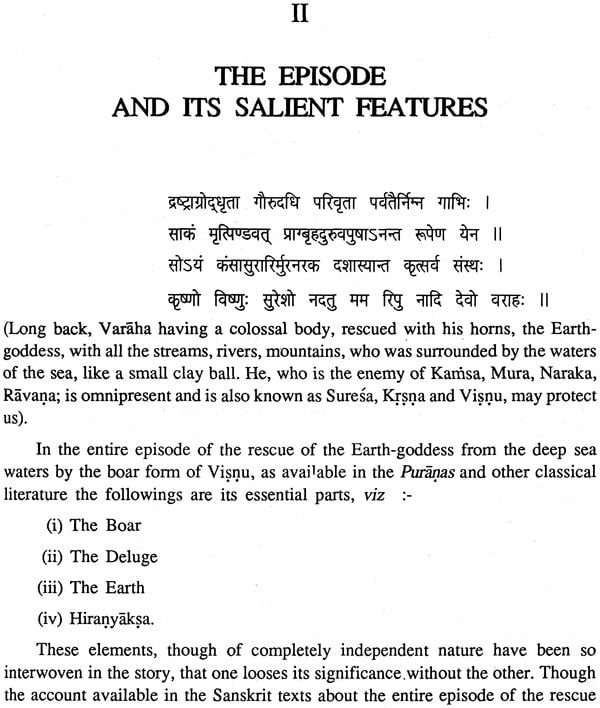
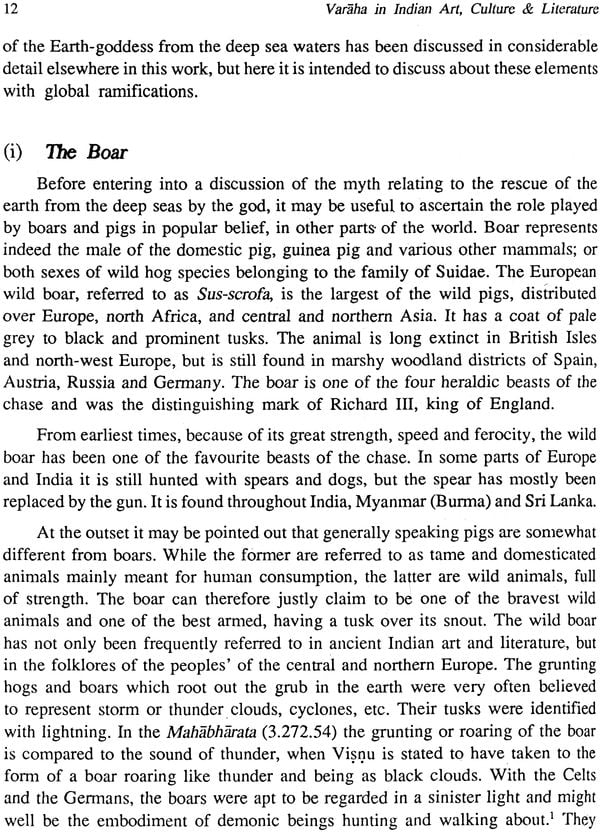
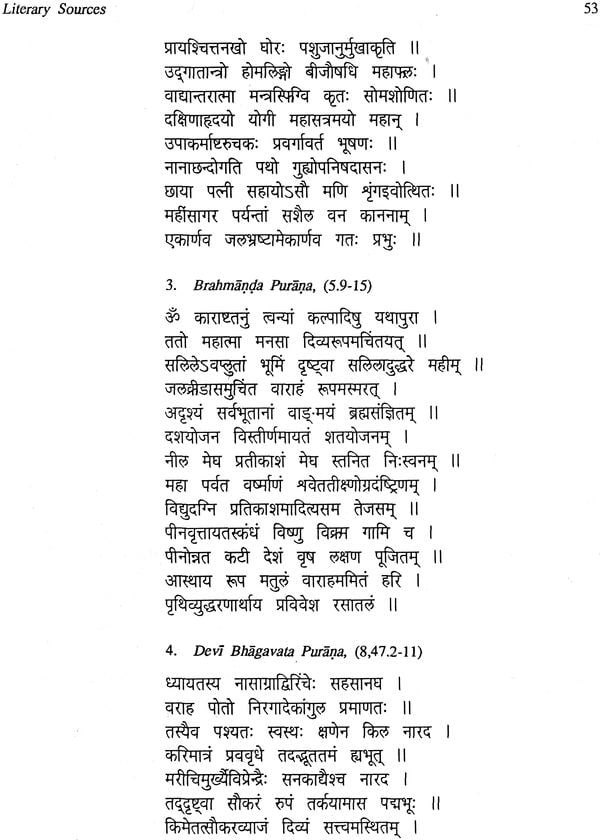
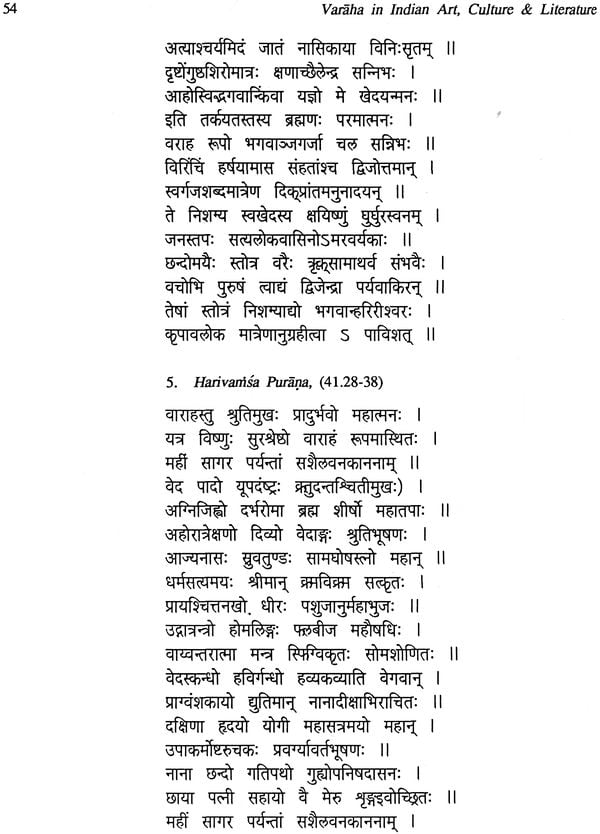
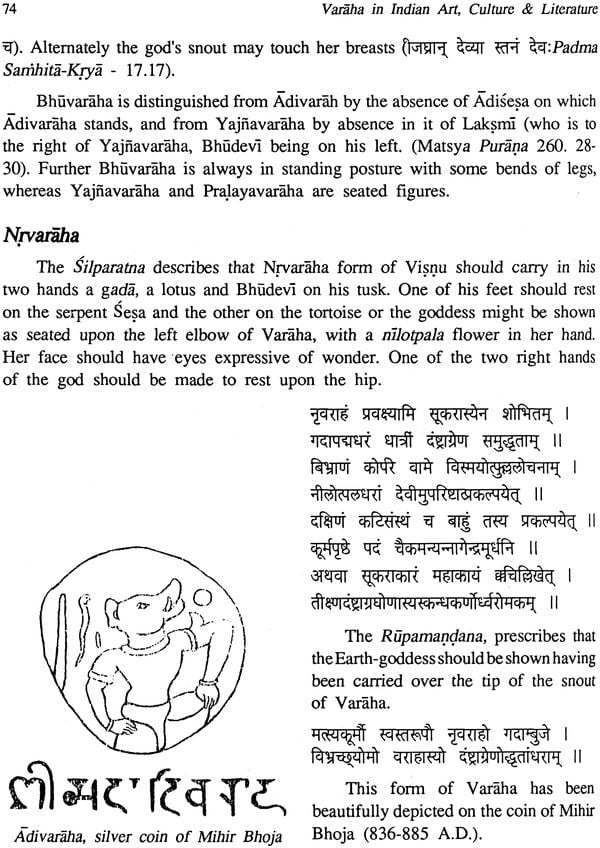
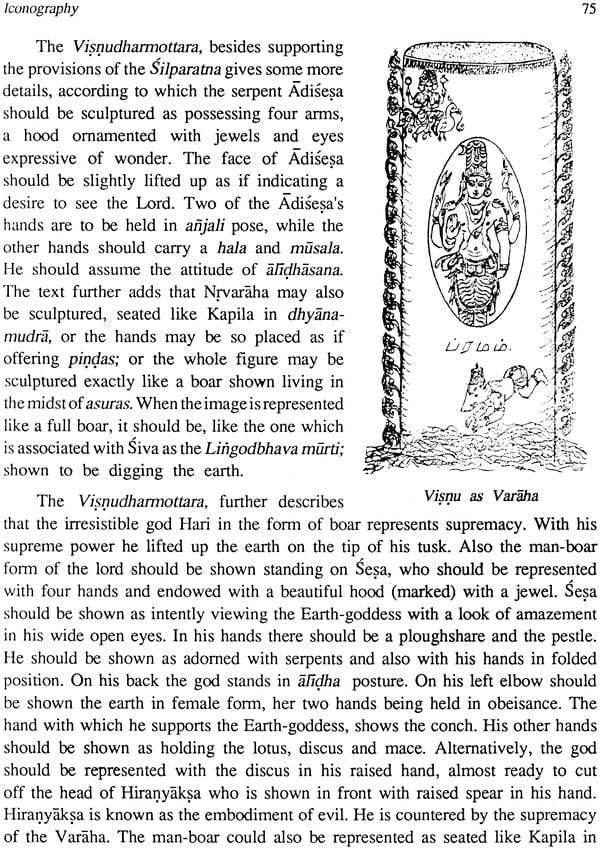
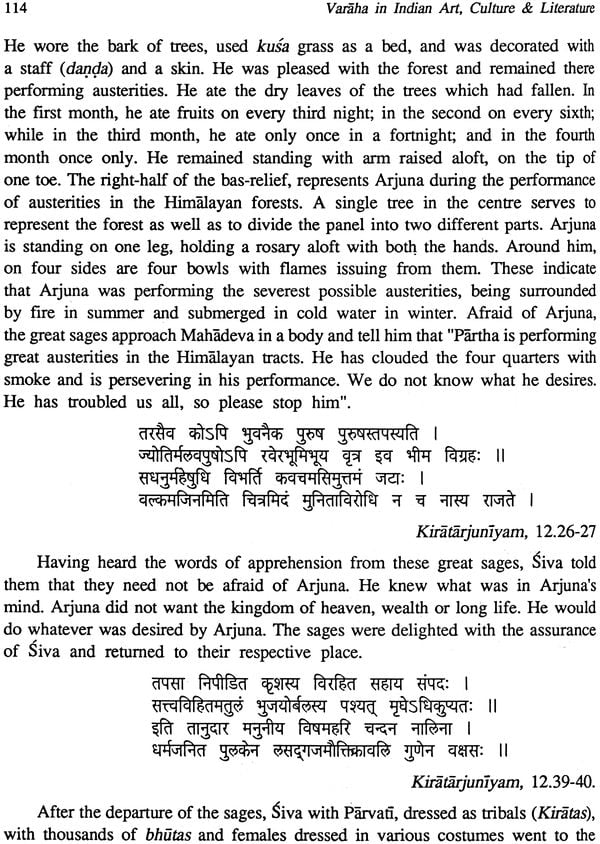
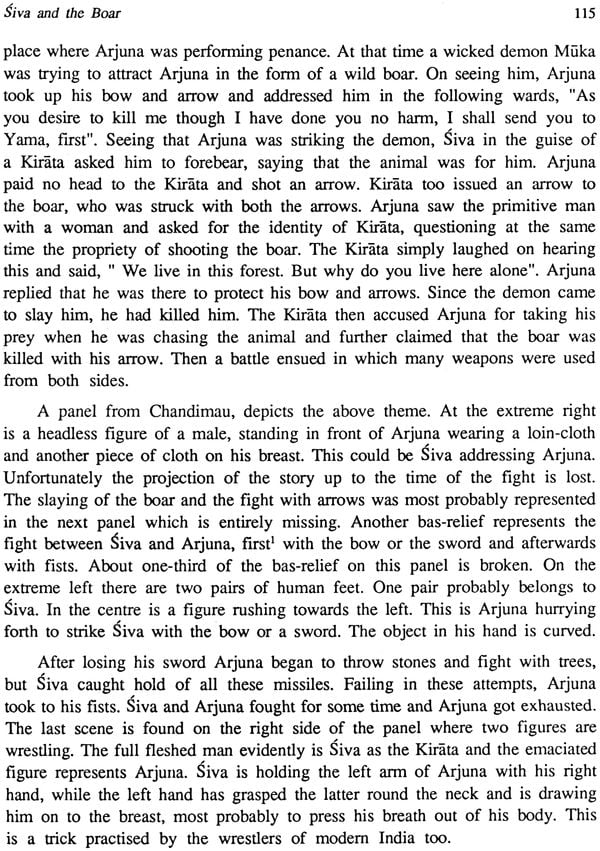
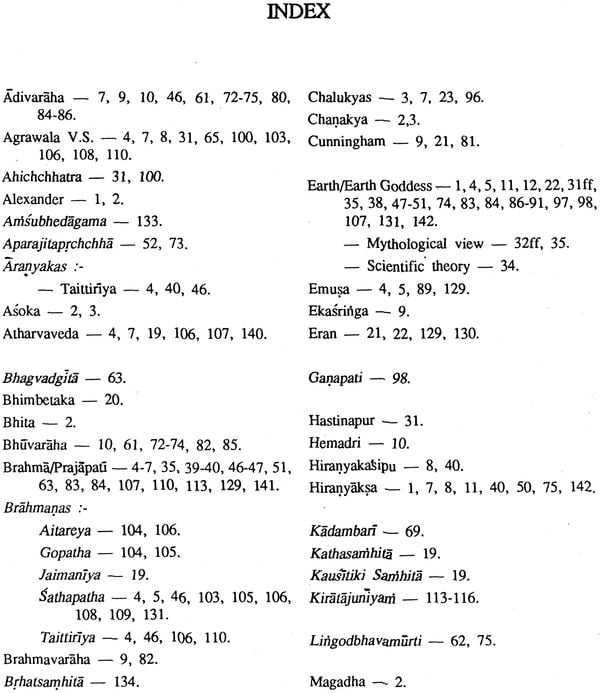
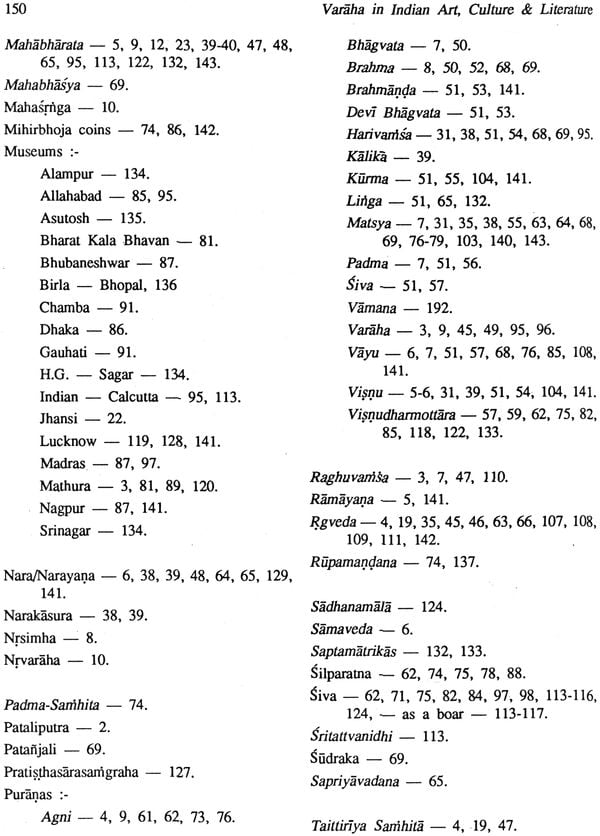
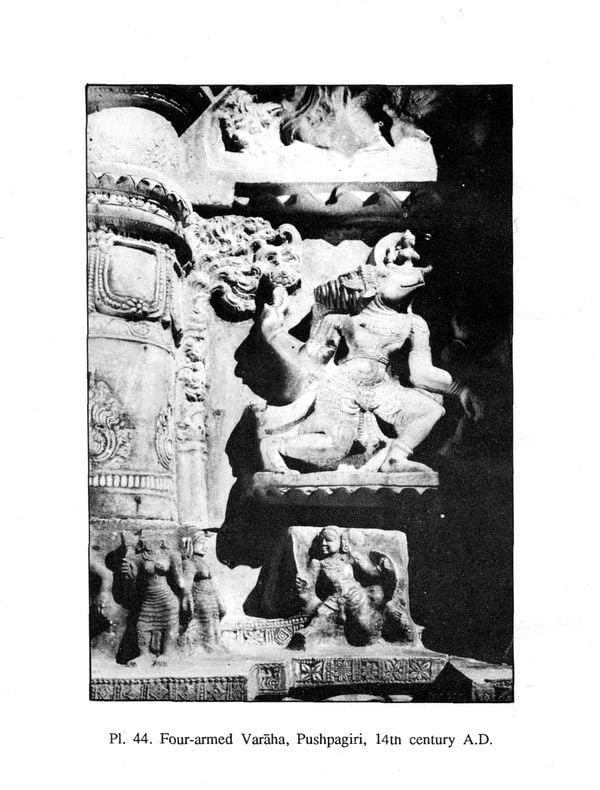
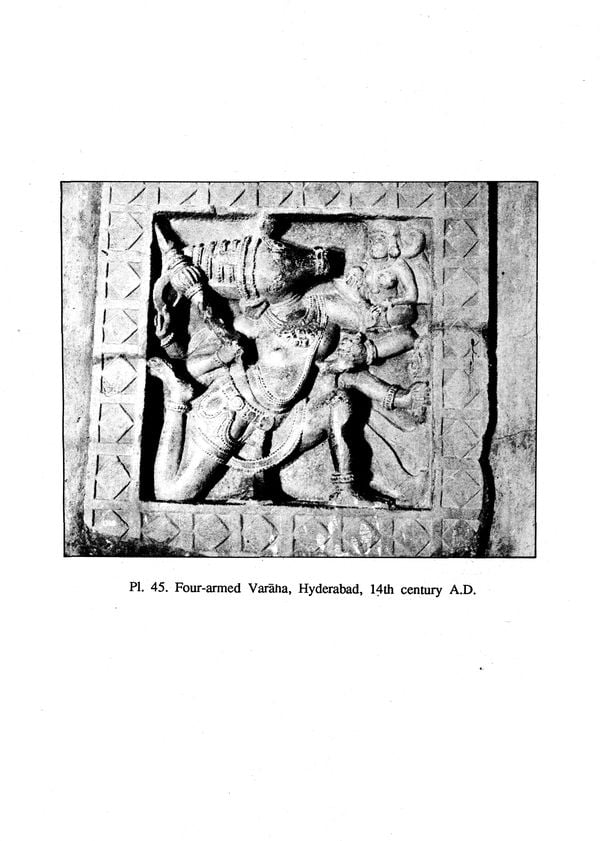
Send as free online greeting card
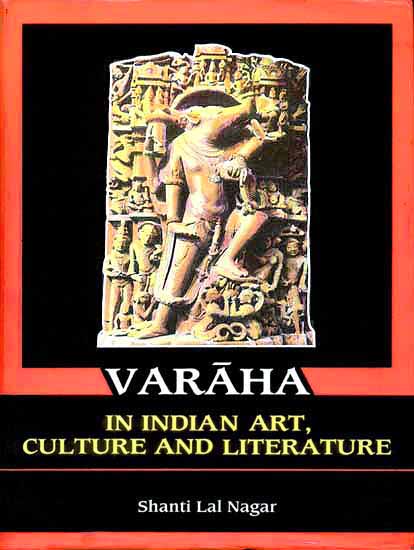
Visual Search